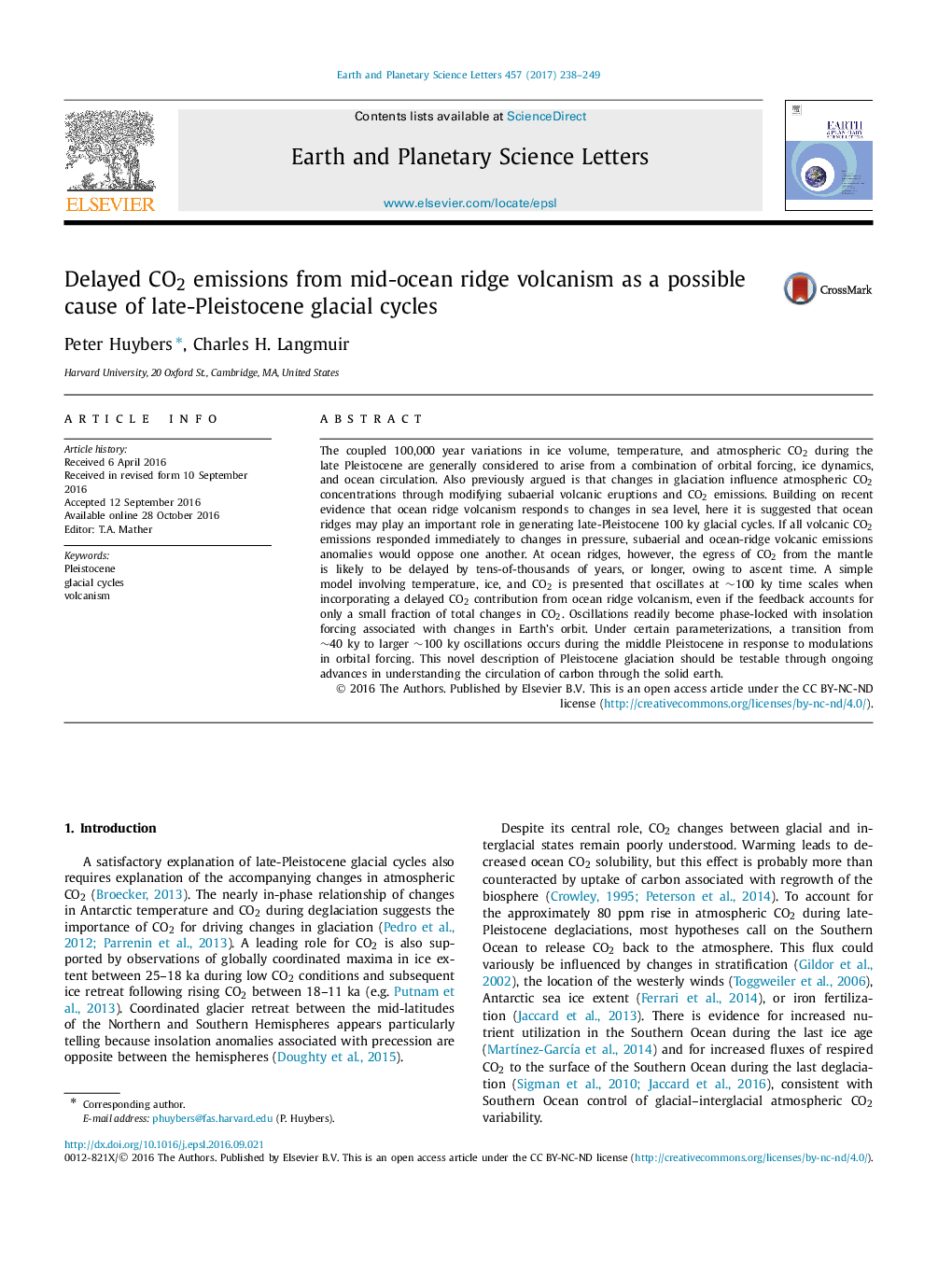| کد مقاله | کد نشریه | سال انتشار | مقاله انگلیسی | نسخه تمام متن |
|---|---|---|---|---|
| 5780063 | 1634699 | 2017 | 12 صفحه PDF | دانلود رایگان |

- Presentation of a novel dynamical model including volcanic sources of CO2.
- Discussion of appropriate volcanic parameterization.
- Illustration of how volcanism can account for the mid-Pleistocene transition and 100 ky glacial cycles.
The coupled 100,000 year variations in ice volume, temperature, and atmospheric CO2 during the late Pleistocene are generally considered to arise from a combination of orbital forcing, ice dynamics, and ocean circulation. Also previously argued is that changes in glaciation influence atmospheric CO2 concentrations through modifying subaerial volcanic eruptions and CO2 emissions. Building on recent evidence that ocean ridge volcanism responds to changes in sea level, here it is suggested that ocean ridges may play an important role in generating late-Pleistocene 100 ky glacial cycles. If all volcanic CO2 emissions responded immediately to changes in pressure, subaerial and ocean-ridge volcanic emissions anomalies would oppose one another. At ocean ridges, however, the egress of CO2 from the mantle is likely to be delayed by tens-of-thousands of years, or longer, owing to ascent time. A simple model involving temperature, ice, and CO2 is presented that oscillates at â¼100 ky time scales when incorporating a delayed CO2 contribution from ocean ridge volcanism, even if the feedback accounts for only a small fraction of total changes in CO2. Oscillations readily become phase-locked with insolation forcing associated with changes in Earth's orbit. Under certain parameterizations, a transition from â¼40 ky to larger â¼100 ky oscillations occurs during the middle Pleistocene in response to modulations in orbital forcing. This novel description of Pleistocene glaciation should be testable through ongoing advances in understanding the circulation of carbon through the solid earth.
Journal: Earth and Planetary Science Letters - Volume 457, 1 January 2017, Pages 238-249